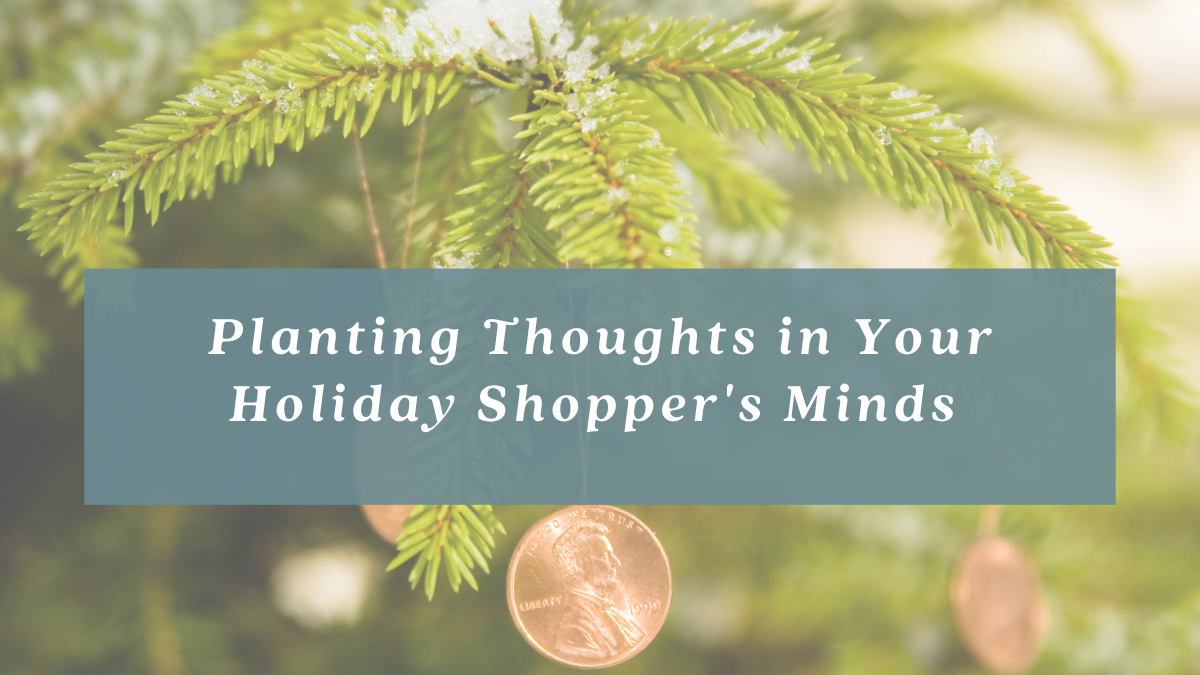Tis the season, yet again, to another few months of family time, being merry, and well, let’s be honest… spending money.
While consumers are figuring out their savings and prepping a list for the big, jolly man up North, businesses are also getting ready in terms of ad spend, competition, and sales goals. Here, we will break down upcoming 2022 predictions and let you know of the best tools for reaching shoppers this holiday season.
According to Pew Research, 31% of US adults admit to being online almost constantly and 85% of Americans go online on a daily basis.
That means more of what we are used to: online shopping.
In terms of retail, consumer spending will see a 2.5% increase from last year. In store sales will grow 0.3%, while eCommerce sales are expected to grow 16.1%. This is not surprising considering the consumer appetite for digital media and, of course, the efficiency of it all.
Social media will influence holiday buying decisions. In addition to an abundance of product and service advertisements on social media platforms, many, like Instagram for example, have channels for stores and purchases to be made right there. Alongside checkouts at our fingertips, creator content is consistently showing that it’s a force to be reckoned with.
One example of creator content could be someone on TikTok showing a new skincare product, allowing an audience to see someone’s opinion and usage of the product, possibly followed by a promo code if the product was sent to the creator (meaning it’s sponsored content). Creator content could entail sponsored ads or simply the creator’s own opinion, all of which still have power to influence brand awareness and reputation on high levels. Sponsored content is not new, but more businesses are beginning to see the value in it. If you’re ever curious how many of today’s influencers, especially amongst younger crowds, are earning money… the answer probably includes some portion of brand deals.
According to a consumer trend report from Jungle Scout based on survey results from July to September of this year, consumers are buying directly from media sources:
- 62% are willing to buy from YouTube (up 2% from Q2, 2022)
- 58% are willing to buy from Facebook (up 14% from Q2, 2022)
- 52% are willing to buy from Instagram (up 15% from Q2, 2022)
- 48% are willing to buy from Tik Tok (up 30% from Q2, 2022)
- 43% are willing to buy from Twitter (up 15% from Q2, 2022)
Based on Google Consumer Insights from last year, 76% of U.S. holiday customers, ages 18 and up, use three or more channels for making purchases. Google noted that last holiday season, 54% of consumers used a total of five or more different channels (print ads, display ads, social media, video, etc.) to make purchases in a span of two days.
This means consistency and volume is a huge factor in holiday advertising. It all comes down to planting a thought in the consumer’s mind that gets watered every day, until it’s a big, beautiful Christmas tree all blinged out with glitter and lights.
Growing sales are all about reaching the consumer; that’s why we optimize the channels to get their attention.
Let’s set the scene for a typical multi-channel shopper:
☆ The shopper sees an ad about the newest shoe trend on Instagram, a seed has now been planted in their mind. That ad was targeted to them because of the demographics, shopping behavior, media they consume, or their past search habits.
☆ Later, they notice a surplus of creators and influencers talking about their love for the product. Perhaps they’ve started to see ads from the shoe company while they are browsing the web. A seed has now sprouted! Then, it’s likely a consumer does their own research. Once those branding tactics have done their job, that shopper may decide to visit the product’s website where they will read some reviews, sign up for emails, and if you’re lucky, press add to cart. The purchasing tree is almost fully grown by that point, but then the consumer decides to think on it…
☆ The next morning, a targeted eBlast “gift” to the inbox has been received and it’s a promotional code! There’s clearly no better time to buy so they return to the cart and follow through with the sale.
55% of shoppers wait to buy gift items until they go on sale, says Google.
A variety in media channels alongside targeting the right audience with paid ads is a recipe for sales! And since holiday season is a time of increased spending, it’s best to stay consistent and volumize advertising to keep up with competition.
Below are some of our best tactics we recommend for getting through to shoppers, so that you can earn that star on top of the tree and reach your sales goals! ☆
☆ Influence Consumers at the Household-Level
Holiday advertising, or any advertising, should always include Audience Curation. With our curated audiences, your advertisers have the ability to target shoppers based on over 700 demographics, interests, and buying behaviors. You can filter audiences based on zip codes, states, congressional districts, and more.
☆ Be in the Social Mix
Instagram is consistently proven as a purchase influencer for eCommerce. Put goods and services front-and-center in shoppers social newsfeeds with compelling, dynamic images or video ads.
☆ Target Streamers with Streaming TV, Video or YouTube Ads
Liner TV is a thing of the past, and households now participate in viewership of a variety of streaming services. We recommend combining streaming TV, video, or YouTube with Audience Curation to efficiently target the right audience. This helps achieve the goal of reaching shoppers through multiple channels with the same message or offer.
☆ Take Advantage of Online Attribution
Tracking is just as important as advertising; they go hand in hand. You are more likely to capitalize on the holiday spending if you’re putting your ad spend where it counts. You should track purchase values and order IDs to determine advertising spend return (ROAS). Tracking conversions is important for knowing what is working and what isn’t worth paying money for.
☆ Target Shoppers Based on Your Reader Data
Your readers are some of the most valuable shoppers in the market. Don’t sell your advertising clients short; include your own audience in every digital presentation you make this holiday season.
☆ Expand Conversion Zones to Cover Parking Lots
Although online shopping is thriving, it doesn’t mean your brick-and-mortar retailers are extinct. It’s a bright idea to expand conversion zone boundaries to parking lots considering the use of curbside pickup options. If shipping time ever becomes an issue, curbside just might save the day for any last minute buyers.
Conversion zone tracking, proper consumer targeting, and paid social are your best friends in advertising! January Spring knows that these tactics are the ideal means of reaching your consumer’s attention and lighting up your sales goals.

